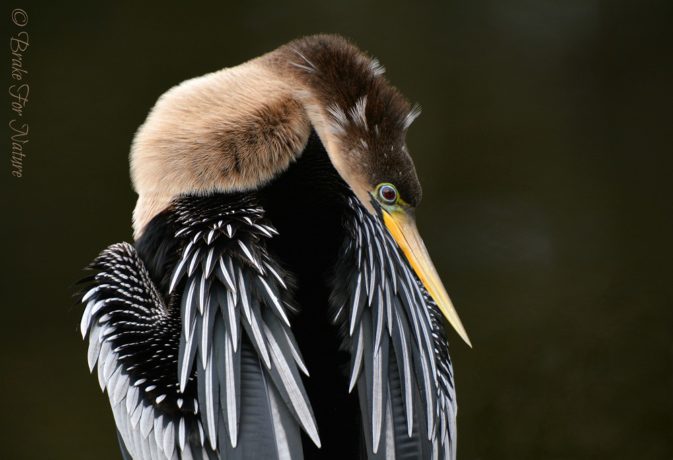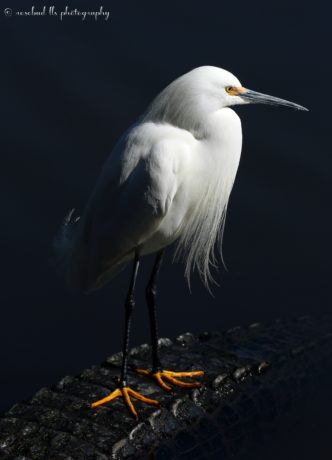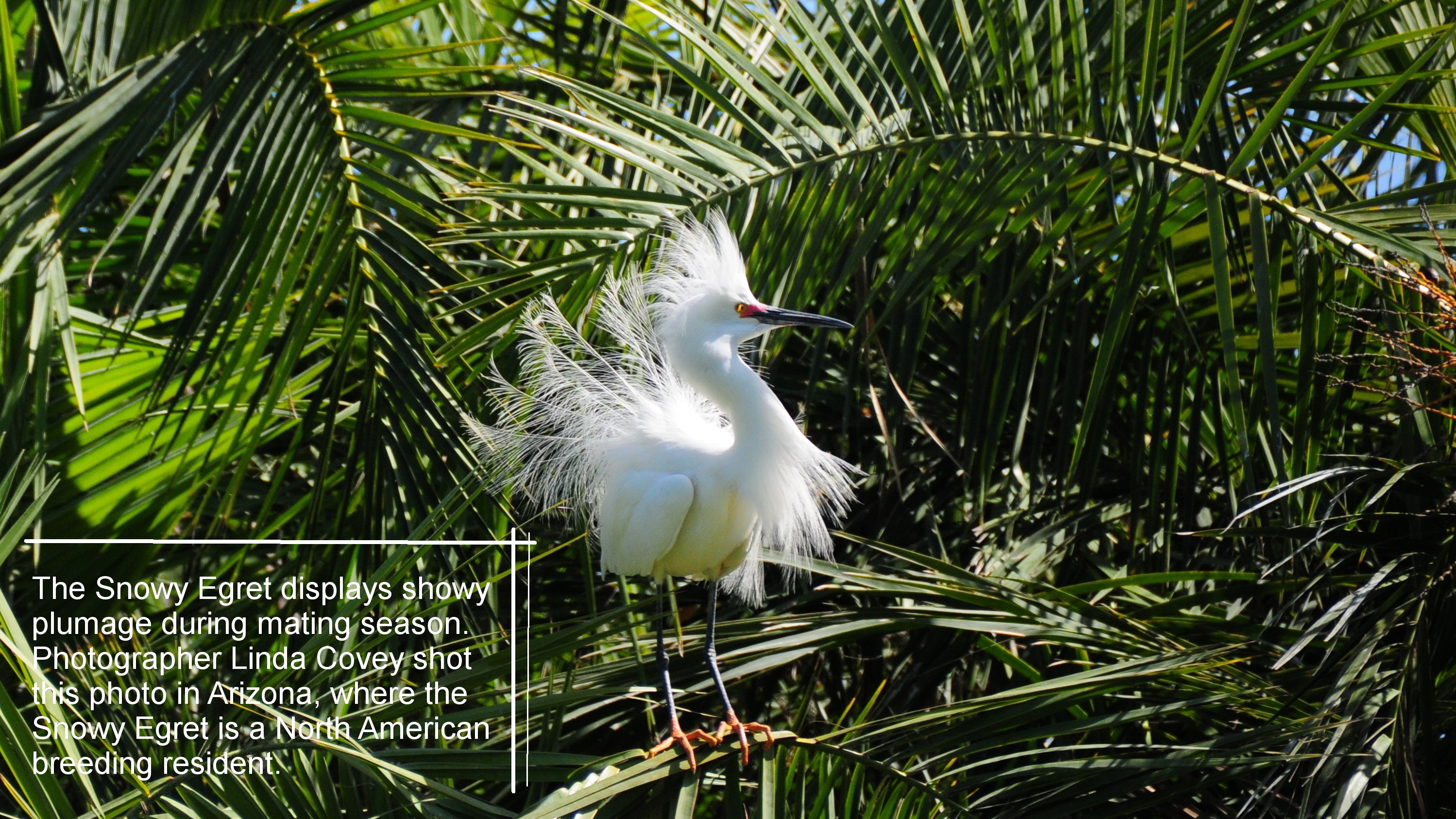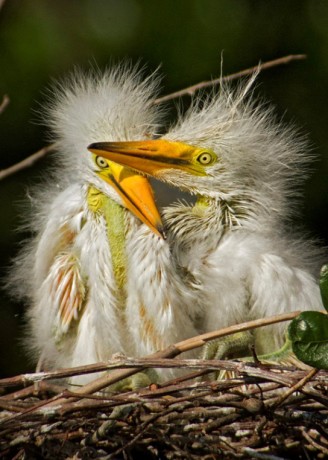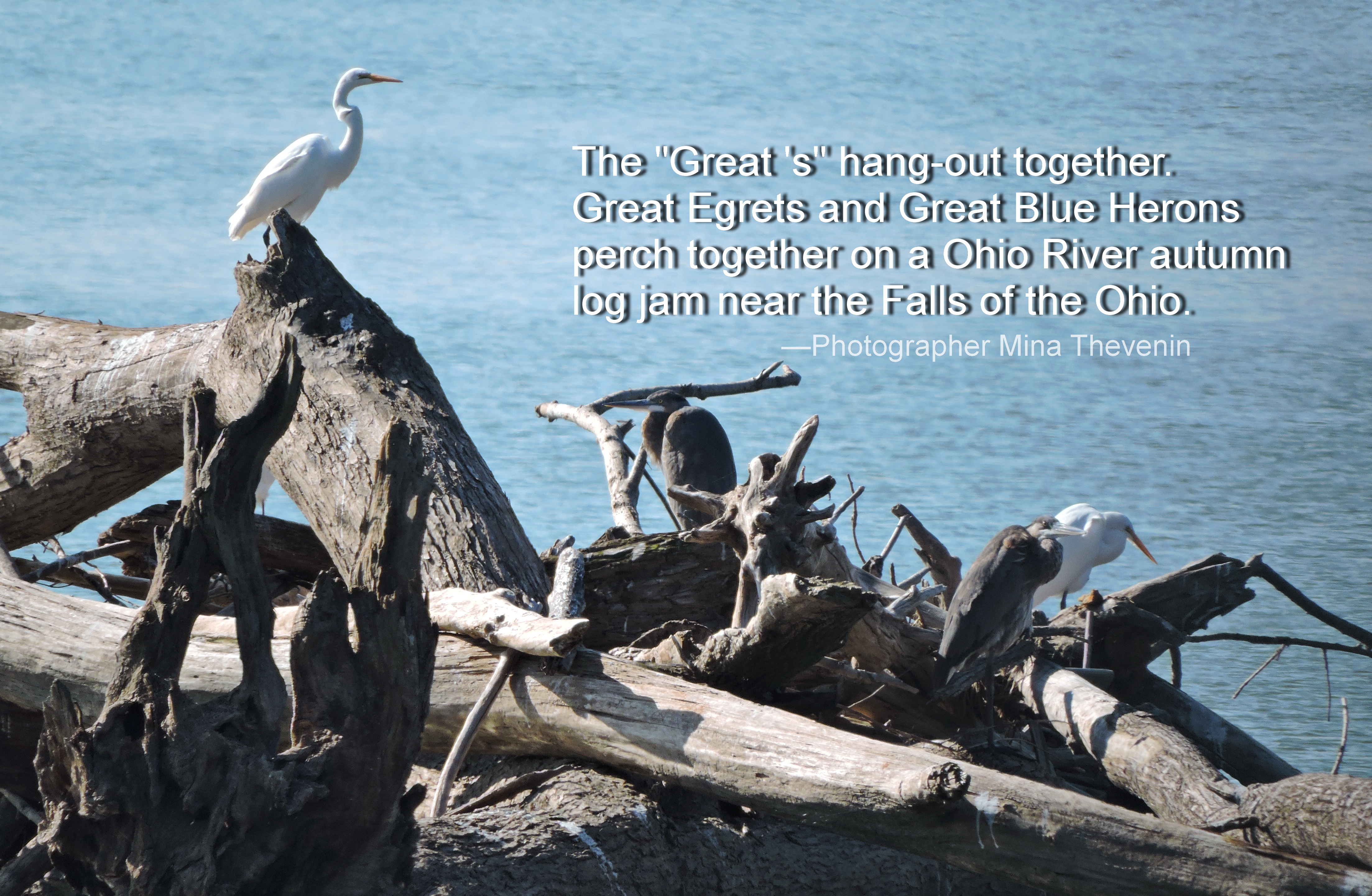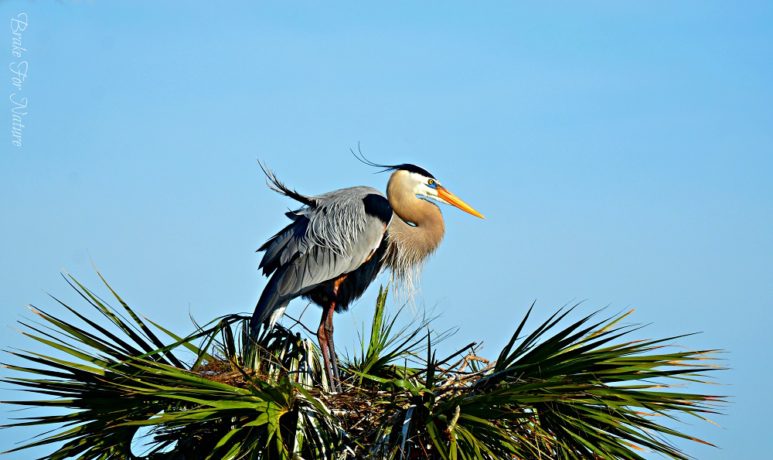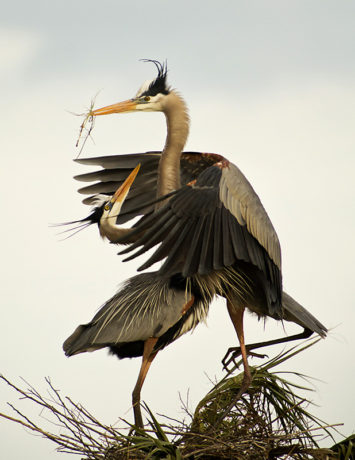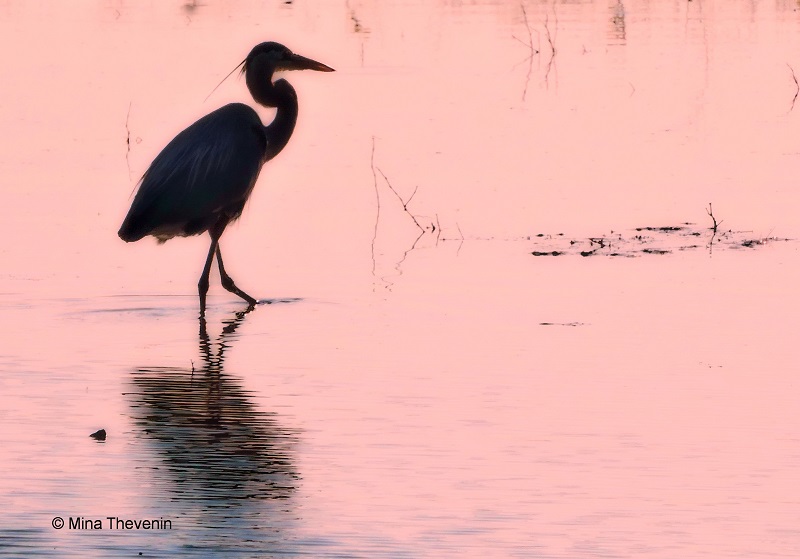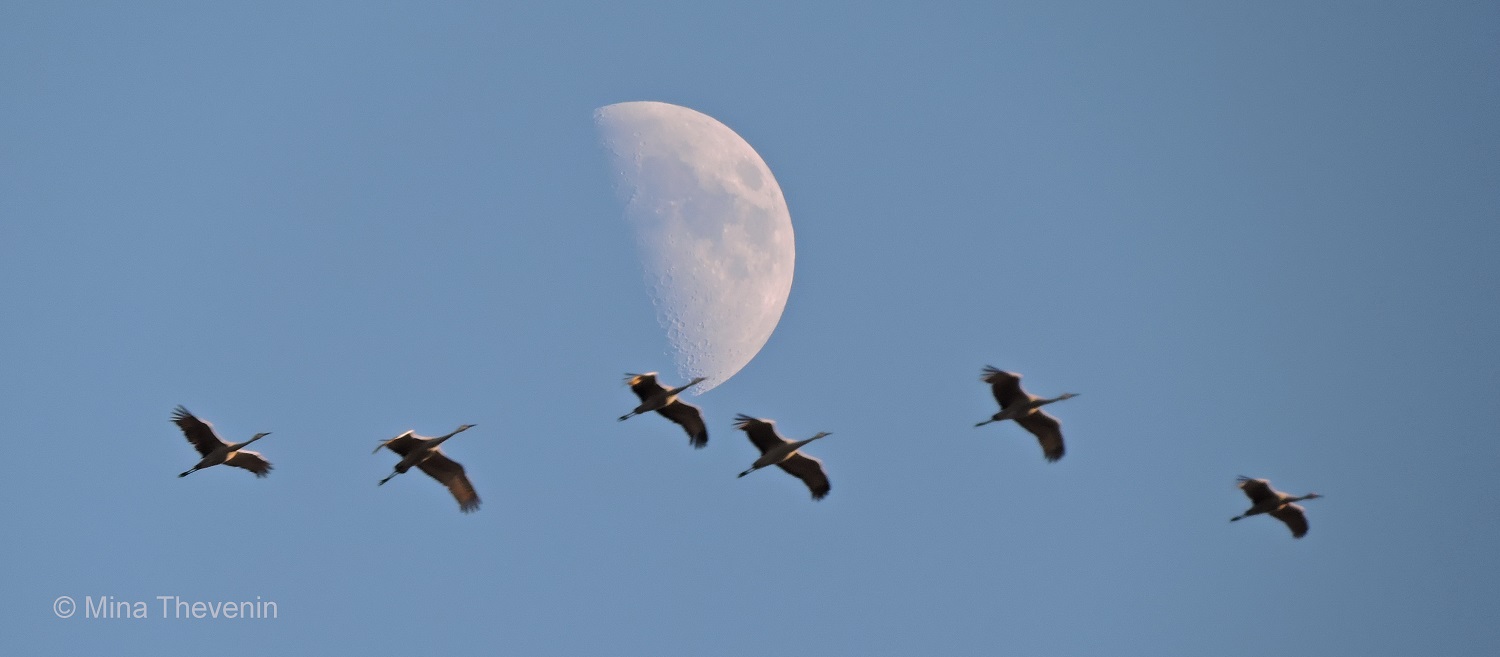PHOTOGRAPHING WATER BIRDS of North America is a wildlife photographer’s dream, especially if you are a bird photographer! Photography World pays homage to the North American birds of the water.
“Hail to thee blithe spirit! Bird thou never wert…, Percy Bysshe Shelley poem “To a Skylark”
WATER BIRDS originally published under the title “Birds of the Water” in the Photography World mag-book by Mina Thevenin, Photography World Journal 1, April 2016 available for Photography World on Blurb.com. Contributing Photographers, some of whom were also published in the print mag-book and in our online article: Barb Hoeldt (female Anhinga above), Linda Sarmento, Linda Covey, Dave Meachum, Robert Wilson, Mina Thevenin, Julie Holloway, Bryan Samuel.
Photographer and Writer Mina Thevenin is an avid naturalist and philanthropist, committed to the preservation of the planet through education and promotion of photography.

WATER BIRDS are found throughout the world along fresh and salt-waters. From estuaries, dams, wetlands, marshes, rivers, creeks, lakes, ponds, mudflats, seas and soggy corn fields—migratory and resident waders, sea and shore birds are spotted along such waterways. Just how many species of water birds are there? Descended from theropod dinosaurs (two-legged mostly carnivorous dinosaurs)¹, there are hundreds of species which would be identified as water birds—a bird that swims, wades and lives in or near water. Compiled into six orders: herons, ibises, spoonbills and storks (Order Ciconiiformes); cranes, rails, moorhens and coots (Order Gruiformes); ducks, geese and swans (Order Anseriformes); grebes (Order Podicipediformes); pelicans, darters and many cormorants (Order Pelecaniformes); and several waders (Order Charadriiformes).
Some WATER BIRDS, which one might think would be scientifically classified as water birds, are not. Osprey, kingfishers and sea eagles are not water birds. Though they make their living by diving or “fishing”, they do not swim or wade.
.
HERONS—
Snowy & Great Egrets
The snowy egret is a showy heron that was almost hunted to extinction in the 1800’s and early 1900’s for its beautiful white plumage; today its conservation status is safe. Audubon field guide describes the Snowy Egret poetically as a, “dance in the shallows on golden slippers.”² Snowy Egret, image below, in full display. Photo by Linda Covey.
Photographer Linda Sarmento’s portrait, left, of the Snowy standing on the back of the alligator, captures its truly exquisite features. This showy bird can be seen breeding as far north as Northern United States and into Southern Canada. It lives year round in parts of southern U.S., Central and South America and the West Indies of the Caribbean.
Snowy Egret on Alligator Back. Photo Credit (left) Linda Sarmento
.
The elegant Great Egret is the largest of the egret family. Similar to the middle-sized Snowy Egret, the Great Egret lives in colonies and is an omnivore. It, too, is easily recognized by its all white plumage and was once hunted to near extinction (current conservation status is least concerned.) With a yellow-orange beak and all black legs and feet, the Great Egret is a very stealthy hunter—wading in shallow water, it stands very still and then quickly strikes forward for its primary diet of fish.
In the wild, both the Snowy and the Great Egrets can live to be into their early 20’s. Baby egrets are called chicks. Fierce at a young age, they can compete with one another in the nest, sometimes fighting with their beaks until one stabs the other to death.
Image, left, two nesting chicks photographed in Florida by Robert Wilson.
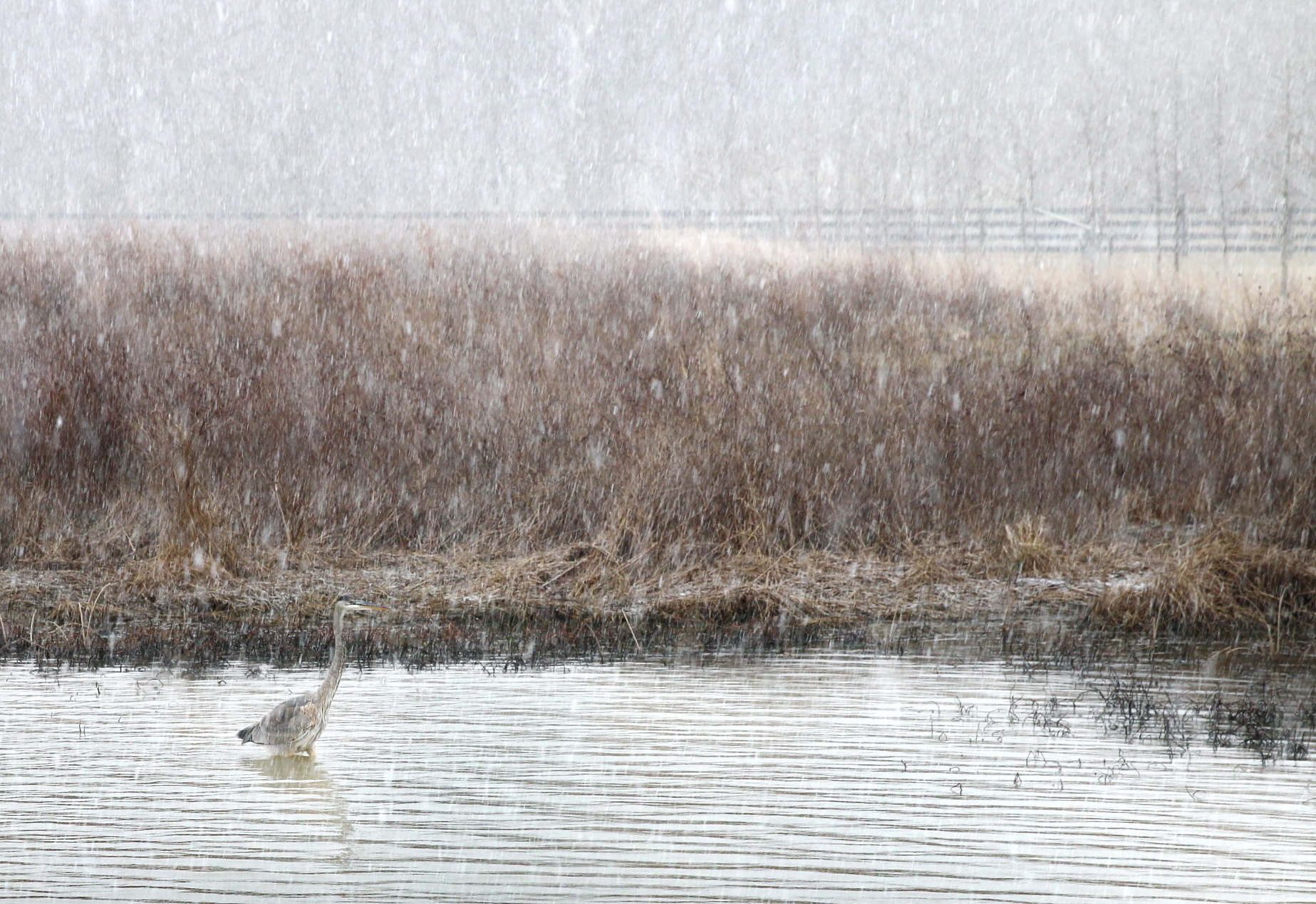
GREAT BLUE HERONS
The largest wading heron is the Great Blue Heron. Primarily a fish eater, this huge bird has a wing span that measures 66–79 inches, or 167–201 cm, and stands as tall as 4½ ft. or 1.4 m. Unlike cranes who fly with their necks lengthened, the Great Blue Heron retracts its neck. It flies with slow, majestic and deliberate wing flaps. The great bird is often seen flying alone unless it is migrating.
The blue-gray colored heron is a stealthy hunter as it wades along the calm freshwater and saltwater shores, though it also hunts in water-logged farm fields (similar to the Greater Sandhill Crane). A frozen statue, it remains motionless when hunting fish, frogs, rodents, gophers and small water birds—it is only upon seeing its prey that it then strikes with lightning speed by thrusting its head forward and snatching the prey with its dagger-shaped bill, swallowing it whole. Image below by Photographer Barb Hoeldt.
For many bird photographers, Florida is an important state to photograph nesting and migrating birds, as well as resident birds. Image, left, is by Photographer Barbara Hoeldt and was taken on such an annual photography trip to Florida in 2016.
High in a tree top nests the heron—typical for the Great Blue. Both male and female care for the annual brood. The male supplies the nesting material while the female builds the nest. In southern breeding areas, the Great Blue may have up to two broods a year. Photograph, right, depicts nesting Great Blue Herons; photograph by Robert Wilson.
North America has 1,000’s of city, state, national parks, and wildlife sanctuaries for the preservation of our natural lands and wildlife. While Florida is a popular region to photograph resident wildlife and migrating birds, see nesting images above and right, there are also thousands more designated and non-designated wildlife habitats. Image, below, was photographed at sunset in Kansas by the author, at Tuttle Creek State Park, small lake. Photographs with reflections of water add an extra element of aesthetic beauty to wildlife or nature photography, and can turn portrait images into works of art—especially when the photographer and the Great Blue spend long hours watching and waiting, both anticipating the catch.
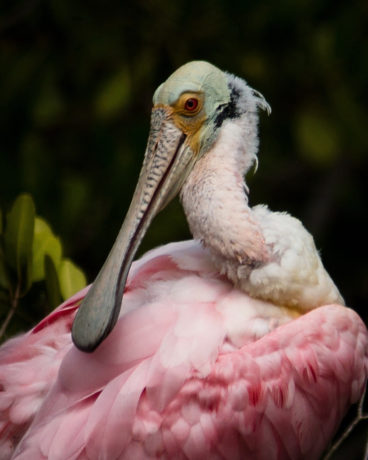
.
.
.
ROSEATE SPOONBILL
An unusual and beautiful straight bill with spatulate tip, hence its name Spoonbill, the Roseate Spoonbill is a wading bird of Mangroves that lives year round in coastal Florida, Texas and Mexico. Historically, like other WATER BIRDS with beautiful plumage, the Roseate was hunted to near extinction in the mid-late 1800’s for its feathers.
It is currently protected under the 1918 Federal Migratory Bird Treaty Act, though there is no Federal listing of current endangered status. Florida lists the Roseate Spoonbill, the only endemic spoonbill to North America, as: Species of Special Concern.
…
.
.EASTERN NORTH AMERICA’S
GREATER SANDHILL CRANE
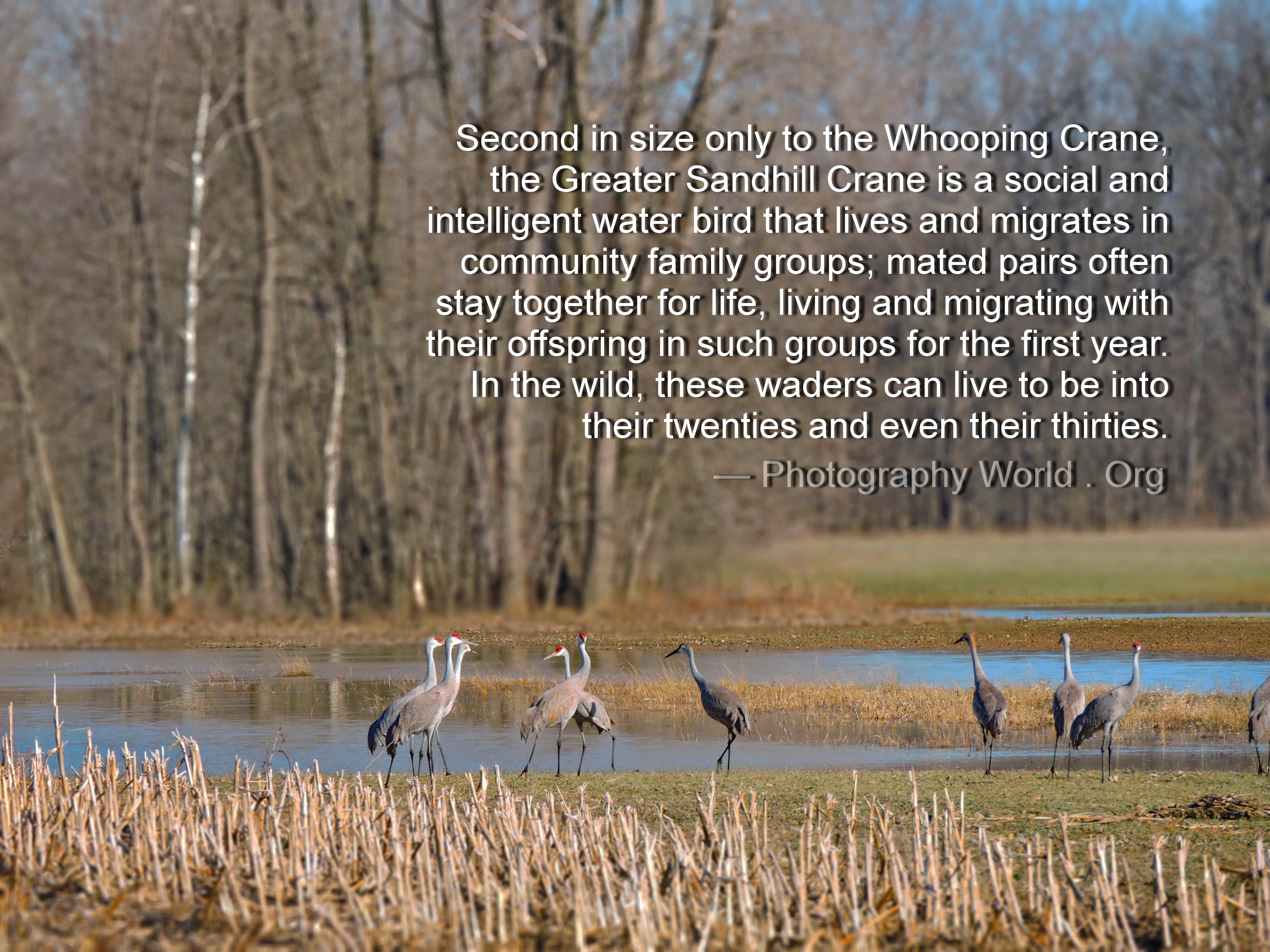
Here I am photographing ducks on the water when I hear a beautiful purring bird call. Looking up to the half moon I behold hundreds and hundreds of Greater Sandhill Cranes flying overhead. It is truly a beautiful sight and sound—I hesitate to photograph for fear of missing the awe of the moment. —Photographer Mina Thevenin
The Greater Sandhill Crane in eastern North America (larger than the sub-species known as the Lesser Sandhill Crane) is a social and intelligent water bird that lives and migrates in community family groups; mated pairs often stay together for life, living and migrating with their offspring in such groups for the first year. In the wild, these waders can live to be into their twenties and even their thirties. The second largest of all North American cranes, only the endangered Whooping Crane is larger, the Greater Sandhill can stand as tall as five feet (1.524 meters) and have a wingspan of five to eight feet. (approximately 1½ to 2½ meters.) Adapting to the season, the Greater Sandhill is an omnivorous eater that forages for food available in season: tubers, berries, insects, worms, frogs, snakes and waste grain—thus it prefers the water-logged corn fields and marshy wetlands. By using its long bill to probe the wet field, the ground is aerated, which in turn helps farmers.
MUSCATATUCK NATIONAL WILDLIFE REFUGE in Indiana, and its surrounding farms northwest into Jasper Pulaski Fish and Wildlife area, is just one migratory winter destination for the cranes. According to Park Ranger Donna Stanley, five years ago the cranes began to stay full winters in the Muscatatuck area—arriving in fall and staying through February, at which time they begin their courtship dance and mating. When weather patterns change toward spring, these generational Greater Sandhill Cranes then begin their northward journey with family groups, flying at speeds from 37-50 miles an hour (60-80 km/h.) towards their Michigan region for spring nesting and summer residence. Their exodus from Muscatatuck usually begins in March, but in 2016 their migration began in late February. How many birds are there exactly? Estimates number that six to eight thousand cranes winter in this area.³
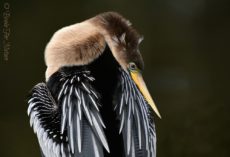
ANHINGA is one of the WATER BIRDS of the New World is found in southern North America, coastal Mexico, parts of the Caribbean and much of South America. Very similar in appearance to the cormorant, the Anhinga or “snakebird”, is a medium size water bird: up to three feet in length or slightly under one meter. An underwater swimmer that dives to pierce its catch, usually fish, it stabs with a dagger-like bill. When swimming it submerges its body so that only its neck and head are seen above the surface, thus resembling a snake.
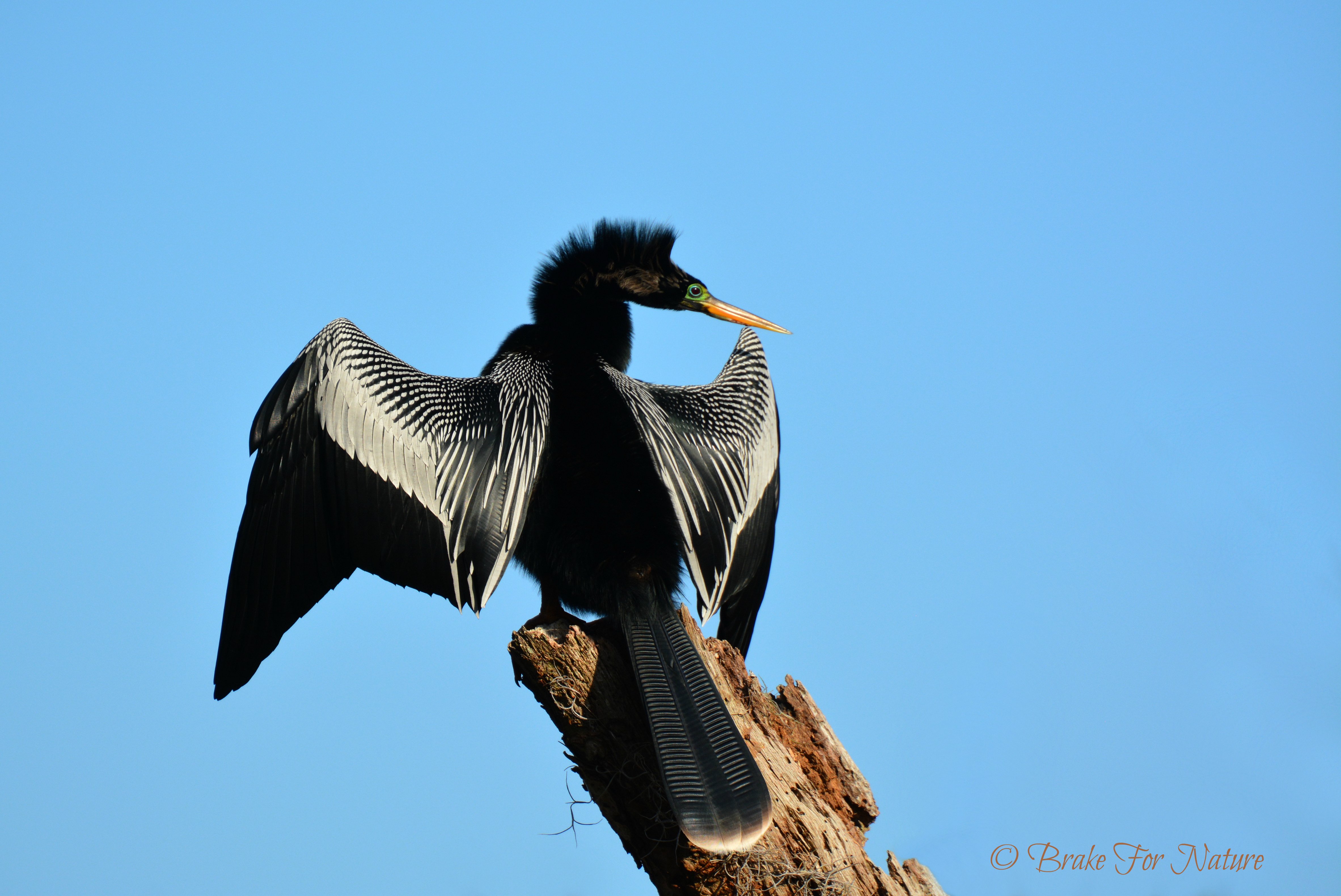
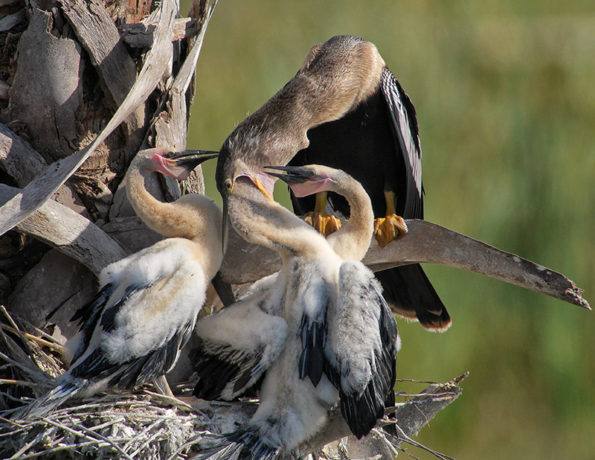
Aside from mating and rearing young (incubation takes approximately four weeks) with its breeding mate, the Anhinga is generally a solitary bird. What does the Anhinga do when it is not fishing in its preferred freshwater ponds and swamps? This southern bird—like the cormorant—perches atop trees in order to air-out its wet wings. (Neither species has oil glands to aid as a natural water repellent.) Look even higher than the tree tops and you may see the Anhinga soaring in the sky, coasting like a turkey vulture, on moving pockets of air thermals! It is the “thermal” momentum which diminishes the need for the anhinga to flap its wings quickly or often. 4
W I L D L I F E
PHOTOGRAPHERS WHO CAPTURE WATER BIRDS
From the island of Guam, east to the Virgin Islands, the sun never sets on the Refuge System. It is as diverse as the wildlife it protects. —National Wildlife Refuge System
And what of the skylark’s happiness might the photographer profess? It is found within the poem—for like the skylark, the photographer knows it best.
________________________________________________________________________________
Resources
1. Wilson, Barry W. Birds: Readings from Scientific American. San Francisco: W.H.Freeman, 1980. 24. Print
2. “Snowy Egret.” Audubon. Audubon Field Guide, 13 Nov. 2014. Web Feb. 2015. <https://www.audubon.org/field-guide/bird/snowy-egret>.
3. Stanley, Donna, Park Ranger. “Greater Sandhill Crane.” Muscatatuck National Wildlife Refuge. Indiana, Seymour. 27 Feb. 2016. Lecture
4. “Anhinga.”, Identification, All About Birds. N.p., n.d. Web. 24 Feb. 2016. <https://www.allaboutbirds.org/guide/Anhinga/id>.
Bull, John L., and John Farrand. “Snowy Egret.” The Audubon Society Field Guide to North American Birds, Eastern Region. New York: Knopf, 1977. 380-81. Print.
Bull, John L., and John Farrand. “Roseate Spoonbill.” The Audubon Society Field Guide to North American Birds, Eastern Region. New York: Knopf, 1977. 380-81. Print.
Harris, Tim. “Cranes.” National Geographic Complete Birds of the World. Washington, D.C.: National Geographic, 2009. 90-91. Print.
Wilson, Barry W. Birds: Readings from Scientific American. San Francisco: W.H.Freeman, 1980. Print
